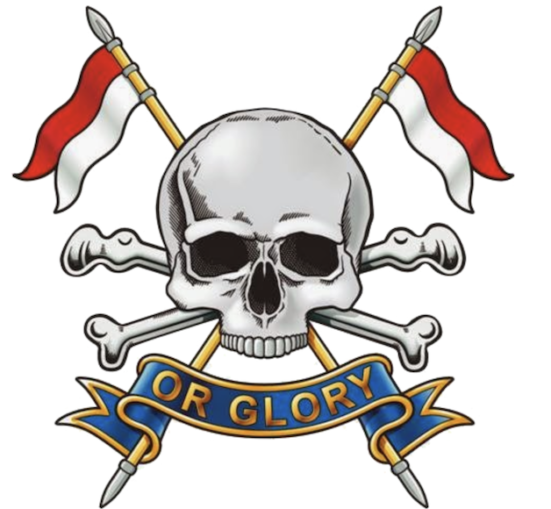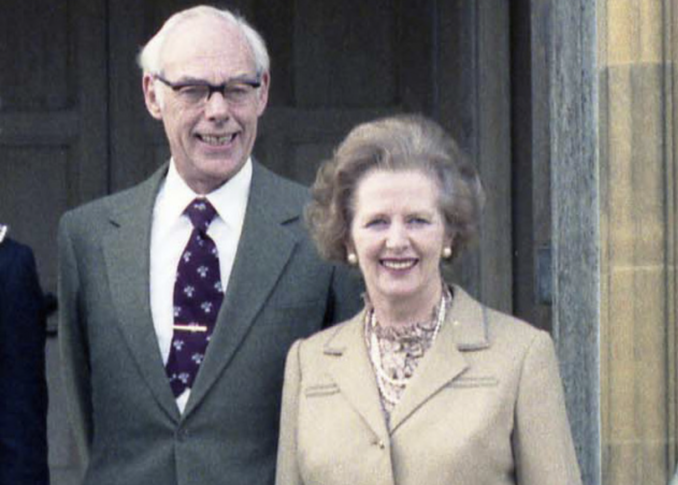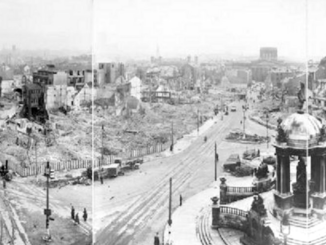As everyone knows, the Cold War was won by minor public school boys with bad degrees from embarrassing new universities. Sat on the banks of the Danube they sketched Czech freight trains disguised as if Baroque-rococo riverside promenades of provincial Hungarian towns.
An empty stomach, the Warsaw Pact protein-deficient diet and surging adrenaline aided the senses while spotting depressed (or otherwise) wagon springs on their way between the smelt and the Mig-29 factory.
The effect being permanent, decades later it is difficult not to keep on observing things. Little details others might miss, often pointless but now and again leading down a rabbit hole to a blind man on a street corner, accompanied by his white dog, with an interesting tale to tell.
Which obliges us to a couple of acres of tarmac on a rainy day in North Yorkshire. Through the week, Catterick Barracks greeted Queen Camilla. Resplendent in red beret with feathers, a navy blue coat with chain mail about the shoulders, gold buttons and a death head broach near the lapel, Her Majesty’s not-so-secret mission was to visit the Royal Lancers.
After inspecting the men (and women) and receiving a royal salute, the queen gave an entertaining and informative speech. During this, she reminded those present she is a daughter of the regiment. Her late father being Major Bruce Shand MC, with bar, of 12 Royal Lancers who joined the colours in 1937. At the other end of his service, Major Shand penned a memoir entitled ‘Previous Engagements.’
As for the broach, it’s not quite a death head, more of a skull and crossbones intersected with crossed lances. Known as the Motto, beneath it sits another motto ‘OR GLORY’. The Lancers’ current role is as armoured cavalry specialising in reconnaissance. These days they are part of 1 Deep Strike Reconnaissance Strike Bridagde who provide the ‘eyes and ears’ of the Army.

Cap badge of The Royal Lancers ,
Coldstreamer20 – Licence CC BY-SA 4.0
Following a series of amalgamations, by 2015 all the Lancer regiments were one, with Queen Elizabeth II as their colonel-in-chief. The title passed, along with the broach, to Queen Camilla when the late queen died.
As part of the visit, a photograph was released showing Major Shand alongside his fellow officers at a 1992 reunion dinner to mark the 40th anniversary of the regiment’s role at the Battle of El Alamein.
The officers are pictured sitting and standing behind a fair amount of port and regimental silverware. Major Bruce is seated to the left and this is where the trained Cold War Mark One Eyeball comes into its own. A face familiar to people of my age and generation who are interested in politics stands behind the queen’s father and wears a modest smile.
Sure enough, reference to the caption upon which the photo rests proves this to be Francis Pym of 9 Lancers, a ‘wet’ in Mrs Thatcher’s first Cabinet. Not quite as wishy-washy as we thought, further research shows Pym rose to the rank of major and served in the Lancer’s North African and Italian campaigns in World War II.
The old Etonian and graduate of Magdalene College, Cambridge, was mentioned in despatches twice, awarded the Military Cross and was elected to parliament as a Conservative MP for Cambridgeshire in 1961. His father, Lesley, had been a member too. A grandfather, The Rt Rvd Walter Pym, was Bishop in Bombay.
Which set me thinking. In an age when MPs who’ve been in uniform never shut up about it, eg Captain Johnny Mercer, Lieutenant Colonel Napolean Tuggenhat of the TA and ‘Captain’ Penelope Mourdant of the Royal Naval Reserve, have more modest warriors previously graced the House of Commons?

Artillery during the Battle of El Alamein,
Cassowary Colorizations – Licence CC BY-SA 2.0
Closer to (my) home than Catterick, Bombay or El Alamein, they say Lord William ‘Willie’ Whitelaw won a parliamentary seat at the 1955 general election on the strength of one poster erected in Penrith’s market square. ‘Vote Major Whitelaw MC,’ it advised.
The Whitelaws? Well-respected gentry. Major, the battlefield promotion conferred when, as part of the 6th Guards Tank Brigade, Whitelaw’s commanding officer perished in the tank in front. The Military Cross won at Caumont in the aftermath of the Battle of Normandy was pinned to Whitelaw’s chest by Field Marshall Bernard Montgomery himself.
As a measure of the ever-contrasting fortunes of conflict, Whitelaw’s father, also William, died of wounds in 1919 after serving in the Argyll and Sutherland Highlanders in the First War, with his son still a baby. Two paternal uncles and a maternal uncle also gave their lives.
Some years ago, the trained eye caught something else and lodged it in the memory. At the tail end of the procession taking the Queen Mother’s coffin to lie in state in Westminster Hall, a bowed James Callaghan kept in step and put on a top show despite being in his 90th year.
Employed in a reserved occupation at the outbreak of hostilities, Callaghan joined the Royal Naval Voluntary Reserve in 1942 as an Ordinary Seaman. His father, also James, served in the First War on HMS Agincourt and died a few years after demobilization by which time was working with the Coastguards.
James Junior went on to serve in the East Indies Fleet on board the escort carrier HMS Activity and ended the war with the rank of lieutenant. In 1945, he served on HMS Queen Elizabeth in the Indian Ocean. Towards the end of hostilities, he returned to England to stand for parliament and rose to be Labour prime minister from 1976-1979. Perhaps not as illustrious a military career as his contemporary Willie Whitelaw, but Callaghan is notable for being the last British PM to be an armed forces veteran.
Speaking of prime ministers, Margaret Thatcher succeeded Callaghan. Despite being only 14-years-old at the outbreak of war, Maggie volunteered as a fire watcher with the ARP after going up to Oxford University in October 1943. The then Miss Roberts also volunteered at a services canteen two evenings a week.

Denis and Margaret Thatcher,
White House photo office – Public domain
A decade older, husband Dennis had a good war. After leaving school in 1933 Dennis joined the family firm, Atlas Preservatives, rising to be the works manager. During a business trip to Germany in 1937, Mr Thatcher heard the drum beat approaching. He left the factory and enlisted in the Army. The following year found him commissioned 2nd lieutenant with the 34th (Queen’s Own Royal West Kent) Searchlight Battalion, Royal Engineers.
According to a Telegraph obituary, only three days after the death of his father in June 1943, Dennis embarked for Sicily with the HQ of 73 Anti-Aircraft Brigade to provide protection for the rear of Montgomery’s Eighth Army in Operation Husky, the invasion of Italy.
After landing on mainland Italy in October 1944, he transferred to Marseille to serve with the US 7th Army. In France, his achievements included extraditing captured Poles interned in Switzerland and moving the 5th Canadian Division free of German detection.
Mentioned in dispatches twice and appointed MBE for his initiative and organisational skills, Dennis Thatcher returned to the family firm in 1946 having attained the rank of mayor.
Another Dennis proved a formidable foe during the first part of Mrs Thatcher’s premiership; Dennis Healey, the deputy leader of the Labour Party between 1980 and 1983. At the outbreak of war, Healey was an Oxford University student – and a member of the Communist Party.
Following the fall of France, Healey left the Communists, graduated and enlisted. His early tasks involved checking travel arrangements at Swindon Station. Commissioned as a 2nd lieutenant in April 1941, he served with the Royal Engineers in North Africa, the invasion of Sicily and the Italian campaign.
At the British assault on Anzio in 1944, Healey was ‘beach master’ or military landing officer. Also mentioned in dispatches twice, promoted to major and awarded the MBE, in the 1945 general election he failed to win for Labour in Pudsey and Otley but was returned to parliament for Leeds South in 1952.
After holding the seat for 40 years he stood down at the 1992 general election and became a member of the House of Lords. A youthful Major Healey is pictured here in uniform addressing the 1945 Labour Party conference.
Michael Foot succeeded James Callaghan as leader of the Labour Party with Dennis Healey as deputy while Dennis Thatcher’s wife faced Foot across the dispatch box in the House of Commons.
During the war, Michael Foot chose not to serve.
© Always Worth Saying 2024



